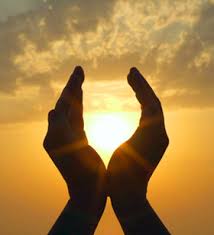 We all know that this year’s Rosh ha-Shanna will be vastly different from holidays of prior years. We will not be buoyed by the voices of hundreds as we sing the tefilot together. Spending yontif outside of the shul building or with many fewer people inside will be painful.
We all know that this year’s Rosh ha-Shanna will be vastly different from holidays of prior years. We will not be buoyed by the voices of hundreds as we sing the tefilot together. Spending yontif outside of the shul building or with many fewer people inside will be painful.
However, it is important to remember that, for many people, this experience is not so different from last year. There are people who, for a range of reasons, don’t find their way into our shuls. Maybe they feel excluded socially by the members of the shul. Maybe the way the Rabbi talks does not leave space for their life experiences. Maybe they have not been driven away but neglected ever to attend in the first place, worried about the judgment of others or their own imagined insufficiencies. People have been isolated from the warmth of our communities for too long, and it has taken the pandemic to open our eyes to that reality.
I would like to offer a simple gemara as a reminder for ourselves this year. Masechet Berachot 7b tells us that Rav Nachman did not come to shul. R. Yitzchak reaches out to him and asks him why he didn’t come. He asks from a place of respect and curiosity, not attack or condemnation. Rav Nachman responds, simply, “לָא יָכֵילְנָא – I couldn’t” and offers no further explanation.
Rav Yitzchak offers to bring a minyan to his home, and Rav Nachman tells him not to bother everyone. Rav Yitzchak makes one final offer to Rav Nachman: let’s arrange to have a messenger tell you when the minyan in shul is davening. Rav Nachman seems puzzled and asks, “מַאי כּוּלֵּי הַאי – what is all this for?”
Before we see the conclusion of the sugya, note that Rav Yitzchak tries in several different ways to devise something that will work for Rav Nachman. There is no doubt that these efforts are, at least in part, due to Rav Nachman’s standing in the community. But what might it look like for us to reach out to everyone, regardless of connections and prominence, and try to find a way to make shul feel genuinely welcoming for everyone?
Rav Nachman quotes R. Yochanan and says:
וַאֲנִי תְפִלָּתִי לְךָ ה׳ עֵת רָצוֹן (תהילים סט:יד) –
אֵימָתַי עֵת רָצוֹן?
בְּשָׁעָה שֶׁהַצִּבּוּר מִתְפַּלְּלִין.
But as for me, let my prayer be unto You, Lord, in a time of favor (Psalm 69:14)
When is the desired moment of prayer?
When the community is praying.
This concept has some very specific Halakhic implications for people who are davening at home. If you can’t be in shul, it is best to align the time of your own davening with the timing of the shul. What is the status of someone who prays at the same time as the shul, but from home?
The standard approach to this gemara can be seen in Rabbeinu Tam (cited in Tosafot, Avoda Zara 4b, s.v. keivan d’ika, Tur, Shu”a O.C. 90:9 with the Peri Chadash). He asserts that when you pray at home at the same time that the minyan prays in shul, your prayers cannot be rejected. While that idea is especially appealing, I think there is another approach to this text that is important to consider, particularly this year.
In the 15th century, Rabbi Shlomo b. Shimon Duran was asked about someone who took a vow not to enter the shul for a specific amount of time. Is such a vow considered akin to taking a vow with the intention of nullifying a mitzvah?
שו”ת הרשב”ש סימן כד (ע’ ג”כ סימן קכה) שלמה בן שמעון דורן
עוד שאלת. מי שנשבע שלא יכנס לבית הכנסת לזמן קצוב אם הוא כנשבע לבטל את המצוה…?
Shu”t Ha-Rashbash #24 (125) (c.1400 – 1467)
And you also asked. If someone took a vow not to enter a synagogue for a specific amount of time, is that like taking a vow in violation of mitzvah?
The first part of his answer is that since there is no mitzvah from the Torah to attend shul, this is not technically a violation of that rule.
תשובה. אינו כנשבע לבטל את המצוה. חדא שאינה מצוה דאורייתא.
Answer: This is not considered to be a vow in violation of a mitzvah for two reasons. First, there is no Torah commandment [at stake].
He then says something astounding:
ותו דהא יכול להתפלל בביתו בשעה שהצבור מתפללים והוי כמתפלל עם הצבור כדאיתא במסכת ברכות.
And in addition, he can pray in his home at the time when the community is davening, and he is considered to be praying with the community (tzibbur)…
According to Rabbi Shlomo Duran, when you time your tefilot to align with the community, it is considered as though you are actually davening with the community!  [See Rambam Hil. Tefila 8:1, with the Kesef Mishna who appears to say the same thing.] Maybe this year we need to promote and encourage this approach of the Rashbash and remind ourselves that — even when we are in separate back-yards, or fields, or gyms, or social halls, or parks, or sanctuaries — we are still all davening together.
[See Rambam Hil. Tefila 8:1, with the Kesef Mishna who appears to say the same thing.] Maybe this year we need to promote and encourage this approach of the Rashbash and remind ourselves that — even when we are in separate back-yards, or fields, or gyms, or social halls, or parks, or sanctuaries — we are still all davening together.
Even as we feel a sense of separation more than ever before, our tradition offers us ways to surmount our physical limitations. By davening simultaneously but apart, for the sake of one another’s safety, we can draw on this profound sense of unity and feel our words rising heavenward from every corner of our distanced but undivided communities.
May we all be blessed with a year of health.
 Last time we explored the
Last time we explored the 
 The next section of the
The next section of the  The beauty of learning Torah without access to a packed Beit Midrash is that the canon of books that I typically consult has grown extensively. The sheer number of
The beauty of learning Torah without access to a packed Beit Midrash is that the canon of books that I typically consult has grown extensively. The sheer number of  We all know that this year’s Rosh ha-Shanna will be vastly different from holidays of prior years. We will not be buoyed by the voices of hundreds as we sing the
We all know that this year’s Rosh ha-Shanna will be vastly different from holidays of prior years. We will not be buoyed by the voices of hundreds as we sing the  [See
[See 


